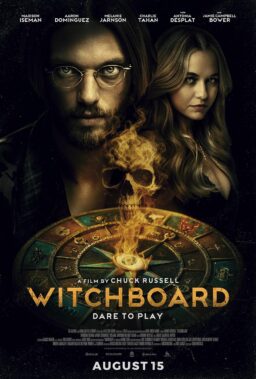I can’t overstate the beauty of “Maya and the Three,” premiering on Netflix tomorrow. It’s a different beauty than Anglo audiences are used to. A lot of animation is “colorful” but that word doesn’t come close to describing the dense visuals of “Maya.” The nine-part series layers color, ranging from earth tones to neon, on top of texture to ensure each frame is its own work of art.
Netflix’s latest treats each new scene, and particularly each new character, as a chance to push its visual style, introducing new elements in its Indigenous iconography every step of the way. If that sounds like a lot, it is. But “Maya and the Three” isn’t overwhelming like so many other kids’ shows (and I watch a lot of them as a parent of two). It balances its visuals, foregrounding stylistically distinct characters over lush nature scenes, formidable temples, and stunning magical realms. And it plays with simplicity too, blending in flattened 2D visuals, like those of pre-conquest paintings, into its 3D world.

You see, it’s not just that “Maya and the Three” is beautiful, it’s that the show is beautiful in a distinctly Mexican way. Our culture is famously “colorful,” but in creator Jorge R. Gutiérrez’s hands, that means even more than anything to come out of the visually-lauded Pixar—even my beloved “Coco” doesn’t push its imagery this much.
The visuals are enough to keep viewers off their phones for all nine episodes, but the plot is compelling too, even for grown-ups. It starts when the God of War, Lord Mictlan, demands Teca princess Maya be sacrificed. Her family goes to battle for her but loses, and so she soon has to find a way to protect herself, her parents, and her kingdom. The overall arc is a bit predictable—an origin story, then gathering of her crew, some obstacles along the way, then the larger confrontation. And it takes too long for “the three” to assemble, especially because we know from the title they will.
But each and every fight scene is epic and there’s about one an episode. Maya and her group face gods with mighty powers from earthquakes to neon-tattoo daggers (somehow, this works!). Each time, I was unsure how Maya and co. would escape or triumph. The fight scenes go on for several beats past where I thought they’d end, imbuing each one with a feeling of doubt that perhaps we’re not watching a traditional hero’s quest.
Indeed, “Maya and the Three” blends tragedy with its adventure in a way that surpasses the Bruce Wayne-type of darkness common to adventure stories. Over the course of the show, Maya’s loved ones face injury and even death. There’s a brutality here that feels deeper and more unjust than we’re using to seeing on screen, whether it’s children’s fair or not. But this darkness is balanced by a sense of joy and humor with silly gags that made me smile, romances that remind us of the positive side of the human experience, and of course, the beautiful visuals.
The result is a show that represents the Latino community in a truly unique way. You can play the guess-that-voice game—Zoe Saldaña stars as Maya and it seems like every Latinx talent is in it from Rosie Perez to Gael Garcia Bernal, Danny Trejo and Stephanie Beatriz. But it’s more than just the folks assembled. “Maya and the Three” is a testament to Latino, and specifically Mexican aesthetics, values, and culture. It pushes what a kids show can be, challenging others to rise to its visual and storytelling standard. When Latinos say we want more representation and higher quality representation, we mean shows like “Maya and the Three.”
Whole season screened for review.












